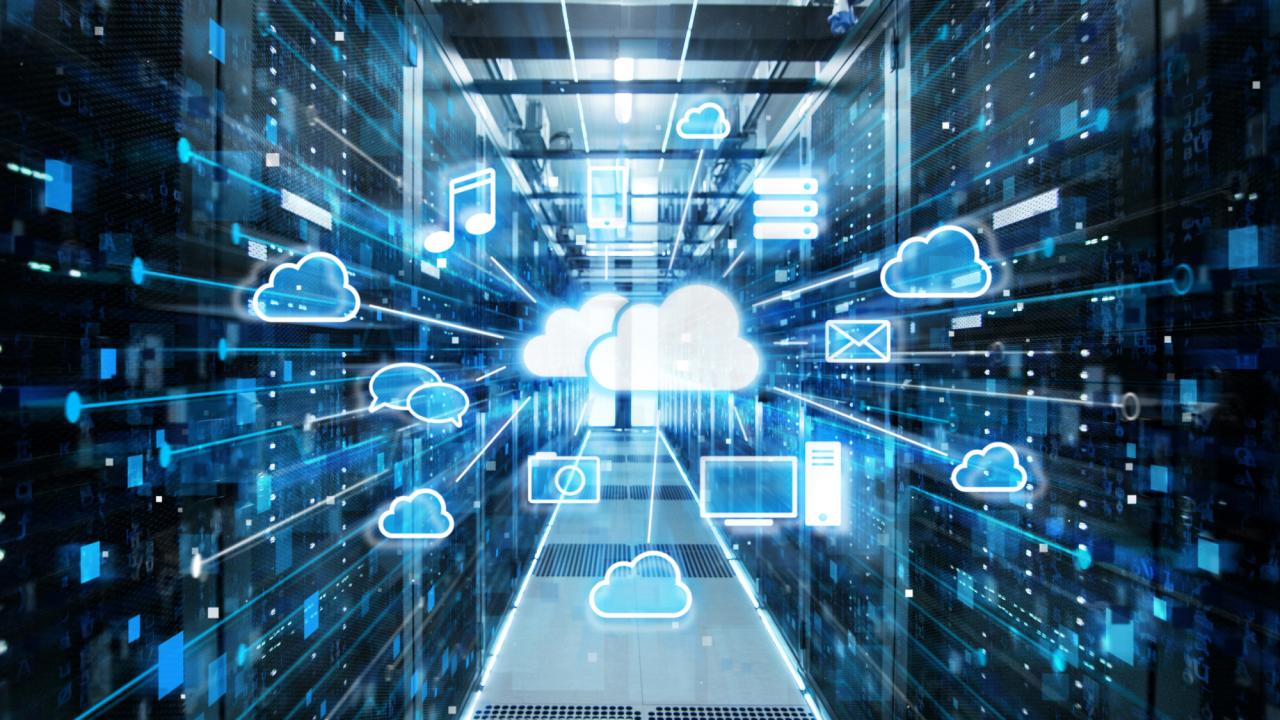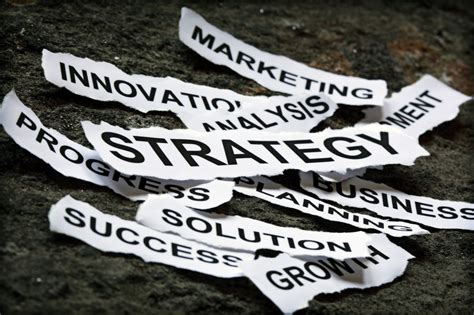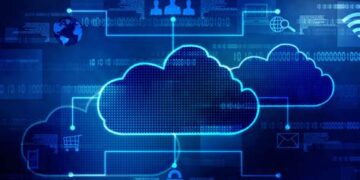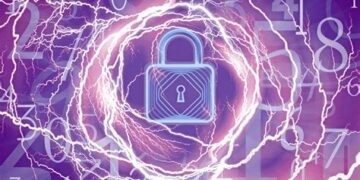In today’s fiercely competitive and rapidly evolving business landscape, enterprise computing stands as the indispensable backbone of every successful organization. It’s far more than just rows of servers or lines of code; it’s the strategic engine that powers innovation, streamlines operations, enhances decision-making, and ultimately drives growth and profitability. Businesses failing to make shrewd, future-proof strategic moves in their computing infrastructure risk falling behind, losing market share, and compromising their very survival. For content creators, this topic is a goldmine, offering rich opportunities for high Google AdSense revenue through in-depth, authoritative content that addresses the core challenges and opportunities facing IT leaders globally. This comprehensive guide will dissect the multifaceted world of enterprise computing, exploring its fundamental components, the strategic imperatives driving its evolution, and the critical decisions organizations must navigate to build a resilient, scalable, and secure digital future.
Defining Enterprise Computing: The Digital Backbone
At its core, enterprise computing refers to the complex ecosystem of information technology systems, software, hardware, and networks that large organizations utilize to support their mission-critical operations. Unlike consumer-grade IT, enterprise computing demands extreme reliability, scalability, security, and manageability to handle massive volumes of data, support thousands of users, and ensure continuous business operations. It’s the intricate machinery that enables a global corporation to process transactions, manage supply chains, communicate across continents, and leverage data for competitive advantage.
Key characteristics that distinguish enterprise computing include:
- Scalability: The ability to grow or shrink computing resources to meet fluctuating business demands without significant re-engineering.
- Reliability and Availability: Ensuring systems are consistently operational with minimal downtime, often requiring redundancy and disaster recovery plans.
- Security: Robust measures to protect sensitive data and systems from cyber threats, unauthorized access, and data breaches.
- Performance: The capacity to handle high transaction volumes and complex computations swiftly and efficiently.
- Manageability: Tools and processes for monitoring, maintaining, and updating complex IT environments.
- Integration: The ability of diverse systems and applications to communicate and share data seamlessly.
- Compliance: Adherence to industry-specific regulations and data privacy laws (e.g., GDPR, HIPAA).
Effective enterprise computing transforms raw data into actionable intelligence, automates complex processes, and enables organizations to respond swiftly to market changes, making it an undeniable cornerstone of modern business strategy.
Strategic Imperatives Driving Enterprise Computing Evolution
The landscape of enterprise computing is in a constant state of flux, shaped by relentless technological advancements, evolving business demands, and new global challenges. Several strategic imperatives are forcing organizations to rethink their computing approaches.
A. Digital Transformation: The Core Driver
Digital transformation isn’t just a buzzword; it’s the fundamental reshaping of business models, operations, and customer experiences through the adoption of digital technologies. Enterprise computing is the engine powering this shift.
- Customer Experience (CX) Enhancement: Companies leverage computing to create personalized, seamless, and engaging customer interactions across all touchpoints, from e-commerce platforms to mobile apps and intelligent chatbots.
- Operational Efficiency: Automation, AI, and advanced analytics, all underpinned by robust computing, are optimizing supply chains, manufacturing processes, and internal workflows, leading to significant cost savings and faster delivery.
- New Business Models: Digital platforms enable entirely new revenue streams and service offerings, often disrupting traditional industries. Think subscription models, on-demand services, and platform economies.
- Workforce Empowerment: Modern computing tools facilitate remote work, collaboration, and access to critical information, enhancing employee productivity and engagement.
B. Cloud Adoption: The Paradigm Shift
The migration to cloud computing is arguably the most significant strategic move in recent enterprise IT history, fundamentally altering how organizations acquire, deploy, and manage their computing resources.
- Infrastructure as a Service (IaaS): Leasing virtualized computing resources (servers, storage, networks) from a cloud provider (e.g., AWS EC2, Azure VMs). This offers flexibility and scalability, reducing capital expenditure.
- Platform as a Service (PaaS): A complete development and deployment environment in the cloud, allowing developers to build, run, and manage applications without the complexity of infrastructure (e.g., AWS Elastic Beanstalk, Azure App Service).
- Software as a Service (SaaS): Cloud-hosted applications accessed over the internet, eliminating the need for local installation and maintenance (e.g., Salesforce, Microsoft 365, Google Workspace).
- Hybrid Cloud Strategies: Combining private on-premises infrastructure with public cloud services, allowing organizations to retain sensitive data on-prem while leveraging the public cloud for scalability and specific workloads. This strategic approach offers the best of both worlds.
- Multi-Cloud Architectures: Utilizing services from multiple public cloud providers to avoid vendor lock-in, optimize costs, or meet specific geographical or regulatory requirements.
C. Cybersecurity Resilience: A Non-Negotiable
As organizations become more digitally reliant, cybersecurity moves from a technical concern to a paramount strategic imperative. A single breach can devastate reputation, finances, and customer trust.
- Zero Trust Architecture: Shifting from perimeter-based security to a model where no user or device is trusted by default, regardless of their location inside or outside the network. Every access attempt is verified.
- AI-Powered Threat Detection: Leveraging artificial intelligence and machine learning to analyze vast amounts of network data, identify anomalies, and detect sophisticated threats in real-time that human analysis might miss.
- Data Encryption: Encrypting data both at rest (stored) and in transit (moving across networks) to protect its confidentiality and integrity.
- Incident Response Planning: Developing robust plans and teams to rapidly detect, respond to, and recover from cyberattacks, minimizing damage and downtime.
- Supply Chain Security: Extending security measures to cover third-party vendors and partners, as supply chain vulnerabilities are increasingly exploited by attackers.
D. Data-Driven Decision Making: The New Gold
Data has emerged as the most valuable asset for enterprises. Strategic computing is crucial for collecting, processing, analyzing, and deriving insights from this immense volume of information.
- Big Data Analytics: Technologies and techniques for analyzing datasets that are too large or complex for traditional data processing software.
- Business Intelligence (BI): Tools and practices for collecting, integrating, analyzing, and presenting raw data to create actionable business insights.
- Machine Learning (ML) and Deep Learning (DL): Algorithms that enable systems to learn from data, identify patterns, and make predictions or decisions without explicit programming, transforming areas like fraud detection, predictive maintenance, and personalized marketing.
- Data Lakes and Warehouses: Centralized repositories for storing massive amounts of raw or structured data for future analysis.
- Real-time Analytics: Processing and analyzing data as it arrives, enabling immediate decision-making and rapid responses to unfolding events (e.g., fraud prevention, dynamic pricing).
E. Edge Computing: Extending the Cloud’s Reach
As IoT devices proliferate and demand for real-time processing grows, edge computing is becoming a vital strategic component, bringing computation and data storage closer to the data source.
- Reduced Latency: Processing data near its origin minimizes delays, crucial for applications like autonomous vehicles, augmented reality, and critical industrial automation.
- Bandwidth Optimization: Less data needs to be sent to the cloud, reducing network congestion and associated costs.
- Enhanced Security and Privacy: Processing sensitive data locally can improve security and facilitate compliance with data residency regulations.
- Resilience: Operations can continue even if connectivity to a central cloud is temporarily lost.
- IoT Device Support: Essential for managing and processing data from millions of sensors and smart devices in smart cities, smart factories, and remote operations.
Key Components of a Modern Enterprise Computing Strategy
A successful enterprise computing strategy is not a monolithic solution but a carefully orchestrated integration of various technological layers and operational models.
A. Infrastructure Foundation: On-Premises, Cloud, and Hybrid
The choice of where computing resources reside is foundational and impacts every other strategic decision.
- On-Premises Data Centers: Companies own and manage their servers, storage, and networking hardware within their own facilities. Offers maximum control and can be cost-effective for stable, predictable workloads with stringent security/compliance needs.
- Public Cloud Infrastructure: Leveraging services from hyperscale providers like Amazon Web Services (AWS), Microsoft Azure, Google Cloud Platform (GCP). Offers unparalleled scalability, flexibility, and a pay-as-you-go model, ideal for fluctuating or rapidly growing workloads.
- Private Cloud: A cloud environment dedicated to a single organization, either on-premises or hosted by a third party. Provides cloud benefits (self-service, elasticity) with greater control and privacy than a public cloud.
- Hybrid Cloud Orchestration: A sophisticated integration of on-premises infrastructure with public or private cloud services, allowing workloads to seamlessly move between environments based on cost, performance, and security requirements. Tools for unified management and orchestration are critical here.
- Edge Infrastructure: Small, localized data centers or computing devices positioned close to the source of data generation (e.g., factory floors, retail stores, smart vehicles). These complement cloud strategies by handling real-time processing and reducing latency.
B. Application Landscape: Modernization and Development
The applications that run on the infrastructure are what truly deliver business value. Strategic moves here involve modernization and agile development.
- Legacy Modernization: Updating or replacing older, monolithic applications with modern, cloud-native architectures (e.g., microservices, containers) to improve agility, scalability, and maintainability.
- Cloud-Native Development: Building applications specifically designed to leverage the scalability, resilience, and flexibility of cloud platforms from the ground up, often using technologies like Kubernetes, Docker, and serverless functions.
- Low-Code/No-Code Platforms: Empowering business users and citizen developers to create applications rapidly with minimal or no coding, accelerating digital transformation and reducing reliance on traditional IT departments for simple applications.
- API Management: Creating, publishing, and managing APIs (Application Programming Interfaces) to enable seamless data exchange and integration between internal systems, third-party services, and partner ecosystems.
- DevOps and DevSecOps: Integrating development (Dev), operations (Ops), and security (Sec) teams and practices to accelerate software delivery cycles, improve quality, and embed security throughout the entire development pipeline.
C. Data Management and Analytics: From Raw to Insight
Effective data strategy is central to enterprise computing. This involves how data is collected, stored, processed, and analyzed.
- Data Governance: Establishing policies and procedures for managing data availability, usability, integrity, and security across the enterprise, ensuring compliance and trustworthiness.
- Master Data Management (MDM): Creating a single, authoritative master record for key business entities (e.g., customers, products, suppliers) across the organization to ensure data consistency and accuracy.
- Data Lakes vs. Data Warehouses: Understanding the strategic use of each. Data lakes store raw, unstructured data for future exploration, while data warehouses store structured, processed data for immediate business intelligence.
- Advanced Analytics and AI/ML Platforms: Deploying platforms that support complex statistical analysis, machine learning model development, natural language processing (NLP), and predictive analytics to uncover hidden patterns and generate actionable insights.
- Data Visualization: Utilizing tools to present complex data in intuitive, interactive visual formats (dashboards, charts) that enable easier understanding and faster decision-making for business users.
D. Security and Compliance: Proactive Defense
Security is no longer an afterthought; it’s an embedded, continuous process throughout the entire enterprise computing lifecycle.
- Unified Threat Management (UTM): Consolidating multiple security functions (firewall, intrusion detection, antivirus) into a single platform for simplified management and comprehensive protection.
- Identity and Access Management (IAM): Managing digital identities and their access privileges to resources, ensuring only authorized users can access specific systems and data. This includes multi-factor authentication (MFA).
- Security Information and Event Management (SIEM): Collecting and analyzing security-related log data from various sources to detect security incidents and provide real-time alerts.
- Cloud Security Posture Management (CSPM): Tools to identify and remediate misconfigurations and compliance violations in cloud environments, which are a common source of cloud breaches.
- Regulatory Compliance Frameworks: Implementing controls and processes to comply with industry-specific regulations (e.g., HIPAA for healthcare, PCI DSS for payment processing) and global data privacy laws (e.g., GDPR, CCPA).
Strategic Moves for Optimizing Enterprise Computing

Beyond adopting new technologies, organizations must make specific strategic moves to optimize their enterprise computing for maximum efficiency, security, and business impact.
A. Total Cost of Ownership (TCO) Optimization
Managing costs across complex IT environments is a constant challenge. Strategic moves focus on TCO rather than just initial purchase price.
- Cloud Cost Management (FinOps): Implementing practices to optimize cloud spending, including rightsizing instances, leveraging reserved instances/spot instances, and monitoring consumption.
- Automation of IT Operations: Automating routine tasks (provisioning, patching, monitoring) to reduce manual effort, minimize human error, and free up IT staff for more strategic initiatives.
- Vendor Consolidation and Negotiation: Streamlining the number of vendors for hardware, software, and services to gain better pricing and simplify management.
- Lifecycle Management: Planning for the entire lifecycle of IT assets, including procurement, deployment, maintenance, and secure disposal, to reduce unexpected costs.
B. Talent and Organizational Alignment
Technology is only as effective as the people wielding it. Strategic moves involve attracting, developing, and organizing IT talent.
- Upskilling and Reskilling: Investing in training programs to equip existing IT staff with new skills required for cloud, AI, cybersecurity, and modern development practices.
- Cross-Functional Teams: Breaking down silos between IT and business units, fostering collaboration, and embedding IT expertise directly within business functions.
- Attracting Top Talent: Developing a strong employer brand and competitive compensation packages to attract skilled professionals in high-demand areas like cloud architects, data scientists, and cybersecurity analysts.
- Culture of Innovation: Fostering an environment that encourages experimentation, learning from failure, and continuous improvement in IT delivery.
C. Governance and Risk Management
Robust governance frameworks are essential for managing the complexity and risks associated with enterprise computing.
- IT Governance Frameworks: Implementing established frameworks (e.g., COBIT, ITIL) to align IT strategy with business objectives, manage risks, and optimize resource allocation.
- Risk Assessments: Regularly identifying, analyzing, and evaluating potential IT risks (cybersecurity, operational, compliance) and developing mitigation strategies.
- Business Continuity and Disaster Recovery (BCDR): Developing comprehensive plans and systems to ensure critical business functions can continue during and after disruptive events (e.g., natural disasters, cyberattacks). This includes regular testing of BCDR plans.
- Compliance Audits and Reporting: Conducting regular audits to ensure adherence to internal policies and external regulations, and providing transparent reporting to stakeholders.
D. Sustainability in Enterprise Computing
Increasingly, organizations are recognizing the environmental impact of their IT operations and are making strategic moves toward greener computing.
- Energy Efficiency: Optimizing data center power usage effectiveness (PUE), utilizing energy-efficient hardware, and leveraging cloud providers committed to renewable energy.
- Resource Optimization: Reducing waste by virtualizing servers, consolidating hardware, and extending the lifespan of IT equipment.
- Circular Economy Principles: Exploring strategies for reusing and recycling IT hardware components at the end of their lifecycle.
- Sustainable Sourcing: Prioritizing hardware and software vendors that demonstrate strong commitments to environmental responsibility.
Future Outlook: The Next Wave of Enterprise Computing
The trajectory of enterprise computing continues its rapid ascent, driven by emerging technologies and an insatiable demand for efficiency and intelligence.
A. Quantum Computing’s Nascent Impact
While still in its early stages, quantum computing holds the potential to revolutionize specific, computationally intensive enterprise tasks, from drug discovery and materials science to complex financial modeling and advanced encryption. Strategic moves here involve early research and identifying potential use cases.
B. Composable Architectures
Moving beyond microservices, composable architectures emphasize highly modular, interchangeable business capabilities that can be rapidly assembled and reassembled to meet evolving business needs, fostering extreme agility.
C. AI Everywhere
Artificial intelligence will become deeply embedded across all layers of enterprise computing—from intelligent automation in IT operations (AIOps) to pervasive AI in business applications, enhancing every process and interaction.
D. Hyperautomation
The combination of advanced AI, machine learning, robotic process automation (RPA), and other technologies to automate increasingly complex business processes, extending far beyond simple tasks.
E. Trustworthy AI and Ethical Computing
As AI becomes more pervasive, strategic focus will shift to developing and deploying AI systems that are transparent, fair, accountable, and secure, ensuring ethical use and public trust.
F. Metaverse and Immersive Computing
While still largely consumer-focused, enterprises are exploring how metaverse technologies could transform collaboration, training, product design, and customer engagement, requiring significant backend computing power.
Orchestrating the Digital Future

Enterprise computing is the silent, yet powerful, force propelling businesses into the digital age. It’s not merely a cost center but a strategic asset that, when managed effectively, unlocks unparalleled opportunities for innovation, competitive differentiation, and sustainable growth. The strategic moves made today—whether embracing cloud-native architectures, bolstering cybersecurity defenses, extracting deeper insights from data, or optimizing for sustainability—will dictate an organization’s resilience and success in the years to come. For IT leaders and business executives, the challenge lies in orchestrating these complex technological components and operational shifts into a cohesive, forward-looking strategy. By making informed, strategic investments in their computing capabilities, enterprises can confidently navigate the complexities of the digital future, driving both operational excellence and maximum value, thereby contributing to the broader digital economy and making this topic a compelling and profitable niche for insightful content creation.







